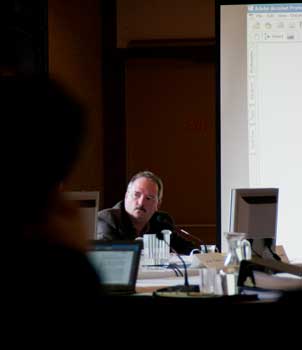Environment Canada is cutting its Compliance Promotion and Enforcement, marine pollution and emergency response budgets over the coming years, raising questions when cuts to other federal departments are added in, about just how the department can continue to operate, much less enforce the 209 conditions that the Joint Review Panel has laid down for the Enbridge Northern Gateway project, not mention future projects connected with LNG and mining in the northwest.
Environment Canada and other departments suffered cuts in the 2014 budget. Now Environment Canada has posted its spending estimates on its website.
A table published on the site shows that Environment Canada spent $17,467,430 on compliance and enforcement in fiscal 2011 to2012; $16,695,292 in 2012 to2013. It estimates spending a little more in 2013 to 2014, $16,725,035; then comes a steady drop $15,821,926 for 2014 to 2015; $15,321,593 for 2015 to 2016 and $15,356,059 for 2016 to 2017.
According to organizational table on the spending estimates site, Marine Pollution and
Environmental Emergencies comes under the Substances and Waste Management division, with most of the department’s concentration on “substances management” and “effluent management.” Despite the probable growing threat to the environment from marine pollution and the possibility of a marine disaster from a tanker plying the northwest, the overall budget for Substances and Waste Management is also shrinking; from $83,291,322 in 2011 to 2012, $79,295,781 in 2012 to 2013. $76,209,841 for 2013 to 2014, $75,747,789 for 2014 to 2015 and $73,834,432 for 2015 to 2016.
The budget cuts take effect just as the Enbridge Northern Gateway project, if it gets a final go ahead and the LNG projects begin to come on stream.
Overall Environment Canada will spending from $1.01 billion in 2014 to 2015 to $698.8 million in 2016 to2017.
In addition, Environment Canada’s list of strategic priorities has absolutely no mention of either monitoring and enforcing pipeline conditions nor protecting the British Columbia coastline.
Plans for meeting the “Sustainable Environment” priority:
- Improve and advance implementation of the Species at Risk program including by reducing the number of overdue recovery documents;
- Pursue a collaborative approach to protect and conserve biodiversity at home and abroad, including by supporting the development of a National Conservation Plan and the maintenance and expansion of a network of protected areas;
- Contribute to responsible resource development through the provision of science-based expert advice during environmental assessments;
- Advance work through the Joint Canada-Alberta Implementation Plan for Oil Sands Monitoring;
- Implement a comprehensive approach to protecting water and to ecosystem management;
- Continue collaborative work with the provinces and territories on water quantity monitoring through the National Hydrometric Program; and,
- Promote compliance with and enforce wildlife acts and regulations.
Another area where the budget has been cut is in climate change monitoring. It was those cuts that garnered the most reaction, from the mainstream media Toronto Star, Environment Canada braces for cuts to climate programs to the environmental site, Desmog Canada, More than 1000 Jobs Lost, Climate Program Hit Hard in Coming Environment Canada Cuts.
The Star notes “Spending on the department’s climate change and clear air program is projected to decrease from $234.2 million this year to $54.8 million in 2016-17.”
On the site, Environment Canada notes
As is the case for all organizations, Environment Canada faces uncertainties in meeting its objectives. These uncertainties create opportunities and risks with potential to positively or negatively affect program results and outcomes. Uncertainties include those driven by external environmental factors, such as dependencies on partners and stakeholders, changing regulatory and legislative requirements, increasing Canadian and international expectations concerning the management of the environment and the continuously increasing pace of advances in science and technology.
Environment Canada gives itself an out, should the Conservative government suddenly be converted to environmental protection while on the road to the 2015 election. Since it notes
The 2015–16 decrease is explained by the reduction in funding for the SDTC Foundation and the sun setting of temporary funds. In 2016–17, the decrease in funding is explained by the sun setting of funding for temporary initiatives. Sun setting programs are subject to government decisions to extend, reduce, or enhance funding. Outcomes of such decisions would be reflected in the Department’s future Budget exercises and Estimates documents.
In other words, Environment Canada is becoming more dependent on partnerships with private companies and foundations to help provide funding for what the government should be doing and it is allowing for the politicians to introduce new temporary programs, probably just before the election, to make it look green.

